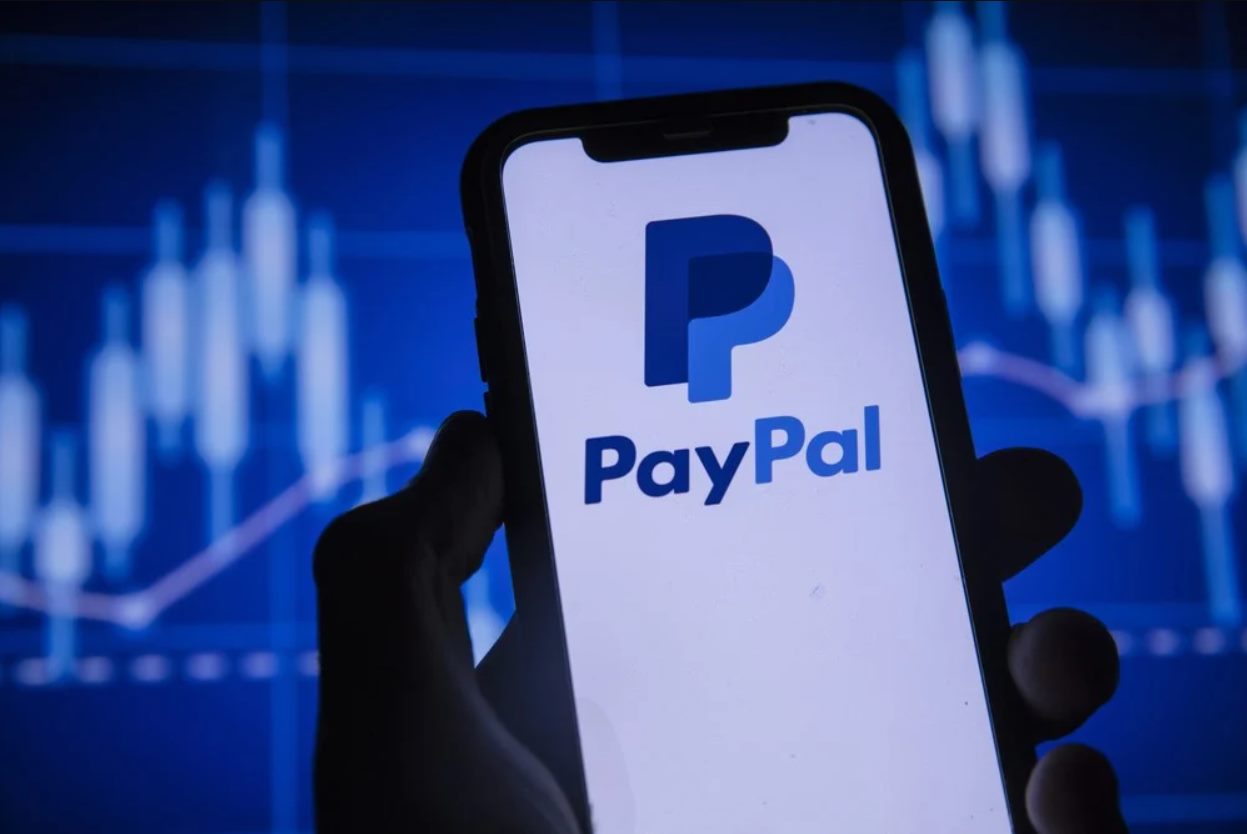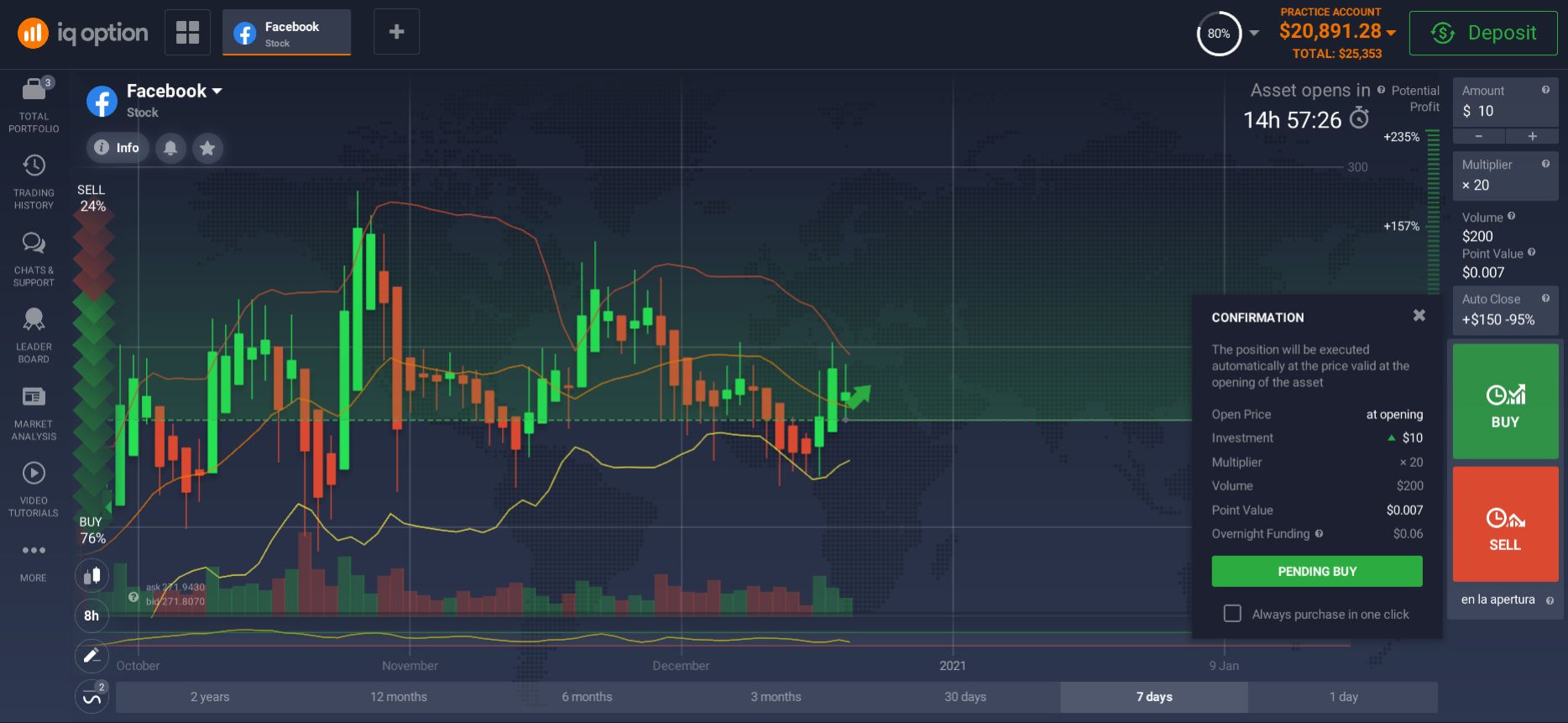Introduction
Facebook, the social media giant founded by Mark Zuckerberg in 2004, has undoubtedly become one of the most influential and successful companies of our time. With over 2.8 billion monthly active users as of 2021, it has revolutionized the way people connect, share, and communicate globally. However, the journey to success was not always smooth for Facebook, especially when it came to its initial public offering (IPO) in 2012.
Facebook’s IPO was highly anticipated, with investors hoping to capitalize on the company’s exceptional growth potential. However, the process was marred by controversies and challenges, leading to a rough start in the stock market. Nevertheless, Facebook persevered and managed to navigate through these initial obstacles, eventually rewarding its investors in various ways.
In this article, we will delve into the details of how Facebook paid back investors, demonstrating the company’s ability to adapt, grow, and generate substantial returns. We will explore the key strategies implemented by Facebook, including share buybacks, dividends, acquisitions, and investments. By providing insights into the methods Facebook used to reward its investors, we can gain a deeper understanding of the company’s financial journey and its commitment to shareholder value.
Background on Facebook’s IPO
Facebook’s journey to becoming a publicly traded company began on May 18, 2012, when it launched its initial public offering (IPO) on the Nasdaq stock exchange under the ticker symbol “FB.” The IPO was highly anticipated, as it presented a unique opportunity for investors to own a stake in one of the world’s most prominent social media platforms.
Leading up to the IPO, Facebook’s financial performance and user base growth were impressive. The company had experienced exponential revenue growth, primarily driven by advertising sales. With its vast user base and immense reach, Facebook had become an attractive platform for businesses worldwide to promote their products and services.
However, the IPO process did not proceed without challenges. One significant challenge that Facebook faced during its IPO was concerns over its ability to effectively monetize its mobile user base. At the time, a significant portion of Facebook’s users were accessing the platform through mobile devices, generating less advertising revenue compared to desktop users. This raised doubts among investors about the company’s long-term profitability and potential for sustained growth in the mobile era.
Additionally, there were allegations of selective disclosure of information to select institutional investors, creating an air of mistrust around the IPO process. These allegations resulted in investigations by regulatory bodies, adding further uncertainty to the company’s debut in the stock market.
Despite these challenges, Facebook’s IPO raised $16 billion, making it one of the largest IPOs in history at that time. The initial offering price was set at $38 per share, valuing the company at approximately $104 billion. However, the IPO did not live up to the high expectations that were set, as technical glitches on the Nasdaq exchange caused delays and disrupted trading on the first day.
The stock price initially experienced a decline, trading below its IPO price in the following months. This prompted widespread criticism of Facebook’s valuation and raised concerns among investors regarding the company’s future prospects.
Despite these initial setbacks, Facebook remained committed to delivering value to its investors. The company focused on addressing investors’ concerns, primarily related to mobile monetization and sustained revenue growth. In the years that followed, Facebook implemented various strategies to reward its investors and regain investor confidence, establishing itself as a leading technology company in the stock market.
Initial Public Offering (IPO)
An initial public offering (IPO) is a significant milestone for a privately held company, as it transitions into a publicly traded entity. For Facebook, its IPO marked a pivotal moment in its corporate history. The IPO involved the sale of shares to the public for the first time, allowing individual and institutional investors to own a piece of the company.
As mentioned earlier, Facebook’s IPO took place on May 18, 2012. The company offered 421.2 million shares to the public at a price of $38 per share. This IPO raised approximately $16 billion, making it one of the largest IPOs in history. Notably, the IPO valued Facebook at around $104 billion, a staggering amount for a company that was only eight years old at the time.
Leading up to the IPO, there was immense excitement and anticipation among investors. Many believed that Facebook had the potential to disrupt various industries and become a dominant force in the digital landscape. The IPO garnered significant attention from retail investors, institutional investors, and even the general public, with people eager to invest in what they saw as the next big thing.
However, despite the high expectations, the IPO did not go as smoothly as anticipated. Technical glitches on the Nasdaq stock exchange led to trading delays and confusion, which had a negative impact on the stock’s performance. The stock opened at $42 per share, a modest increase from the IPO price, but quickly fell below $38, causing concern among investors.
The decline in the stock price raised questions about Facebook’s valuation and its ability to sustain its growth trajectory. Critics argued that the IPO was overhyped and that the company’s financials did not justify the lofty valuation it received. Additionally, concerns were raised about the company’s mobile monetization strategy, as mobile usage was growing rapidly, but Facebook’s ability to generate revenue from mobile advertisements was still in question.
Despite the initial challenges, Facebook took proactive measures to address investor concerns and adapt to the changing digital landscape. The company focused on improving its mobile platforms and introducing new advertising products specifically tailored for mobile devices. This strategic shift eventually paid off and helped Facebook emerge as a powerhouse in mobile advertising.
Moreover, the IPO allowed early investors, such as venture capitalists and angel investors, to exit their positions and realize significant gains. For these early investors, the IPO represented a lucrative opportunity to cash out their investments and reap the rewards of their early belief in the company’s potential.
In summary, Facebook’s IPO was a momentous event that marked the company’s transition from a privately held entity to a publicly traded corporation. Despite the initial challenges and criticisms, the IPO provided a platform for Facebook to attract investors, raise substantial capital, and embark on a path of sustained growth and profitability.
Revenue Growth and Profitability
Since its IPO, Facebook has experienced remarkable revenue growth and achieved consistent profitability. The company’s ability to monetize its vast user base and effectively capitalize on the digital advertising market has been instrumental in driving its financial success.
In the years following the IPO, Facebook’s revenue has grown substantially. The company’s primary source of revenue comes from advertising, with businesses utilizing Facebook’s platform to reach their target audiences. Facebook has continuously enhanced its advertising capabilities, introducing innovative ad formats and targeting options, allowing advertisers to maximize their return on investment.
Furthermore, Facebook’s user base growth has been a catalyst for its revenue growth. With a steadily increasing number of active users, the company has been able to attract more advertisers, driving up demand for ad space on its platform. From 2012 to 2020, Facebook’s annual revenue grew from $5.1 billion to $86 billion, representing an impressive compound annual growth rate (CAGR).
In terms of profitability, Facebook has consistently delivered strong financial results. Despite facing challenges related to privacy concerns and increased competition, the company has maintained healthy profit margins. Facebook’s ability to generate significant amounts of revenue while managing expenses has contributed to its profitability. The company has leveraged its massive scale and operational efficiencies to drive profitability and deliver value to its stakeholders.
It is worth noting that Facebook’s profitability has also been supported by its diversified business model. In addition to its core platform, Facebook owns other popular social media platforms such as Instagram, WhatsApp, and Messenger. These platforms have not only expanded Facebook’s user base but also provided additional avenues for advertising and revenue generation.
Moreover, as digital advertising continues to evolve, Facebook has embraced new opportunities to diversify its revenue streams. The company has been actively exploring avenues such as e-commerce integration and ad placements in video content, further strengthening its position in the digital advertising ecosystem.
Overall, Facebook’s revenue growth and profitability since its IPO have been impressive. The company’s ability to adapt to changing market dynamics, coupled with its relentless focus on innovation and user experience, has allowed it to generate substantial revenue and deliver consistent profitability. Facebook’s financial success is a testament to its strong leadership, strategic vision, and commitment to creating value for its shareholders.
Facebook’s Stock Performance
Facebook’s stock performance has been a subject of interest for investors and analysts alike since its IPO. While the initial trading volatility and skepticism created challenges, the company has ultimately proven its resilience, delivering significant returns for its shareholders over the years.
In the immediate months following the IPO, Facebook’s stock price experienced a decline and traded below its IPO price of $38 per share. This period of underperformance was mainly attributed to concerns surrounding the company’s ability to monetize its mobile user base effectively. However, Facebook remained determined to address these concerns and improve its mobile advertising capabilities.
With focused efforts to enhance mobile advertising and consistent revenue growth, Facebook’s stock price eventually started to gain momentum. By the end of 2013, the stock had surpassed its IPO price, and from there, it embarked on a remarkable upward trajectory.
Since its IPO, Facebook’s stock price has delivered impressive returns to investors. The company’s stock has outperformed broader market indices, and long-term shareholders have seen substantial appreciation in their investments. Facebook’s stock split in 2017 further increased accessibility and liquidity, contributing to its strong performance.
One of the key factors contributing to Facebook’s stock performance has been its ability to consistently meet or exceed investor expectations. The company has demonstrated strong revenue growth, profitability, and user engagement metrics, which have helped build investor confidence and drive the stock price higher.
Another factor that has contributed to Facebook’s stock performance is its ability to identify and capitalize on new growth opportunities. The company’s acquisitions of Instagram and WhatsApp have proven to be strategic moves, expanding its user base and revenue streams. These acquisitions have not only added value to Facebook’s business but have also boosted investor sentiment and contributed to the stock’s upward trajectory.
Additionally, Facebook’s focus on innovation and staying at the forefront of industry trends has played a crucial role in its stock performance. The company continues to invest in emerging technologies, such as virtual reality and artificial intelligence, positioning itself for future growth and market dominance.
It is important to note that, like any publicly traded company, Facebook’s stock price is subject to market fluctuations and can be influenced by various factors such as economic conditions, regulatory changes, and competitive pressures. However, Facebook’s consistent financial performance and strategic initiatives have demonstrated its ability to weather these challenges and deliver value to its shareholders.
Overall, Facebook’s stock performance since its IPO has been impressive, generating significant returns for long-term investors. The company’s ability to adapt, innovate, and capitalize on growth opportunities has fueled investor confidence and driven the stock price to new heights. Facebook’s stock performance serves as a testament to its strong business fundamentals and its ability to deliver long-term shareholder value.
Share Buybacks
Share buybacks have been one of the key ways in which Facebook has rewarded its investors. A share buyback, also known as a stock repurchase, occurs when a company purchases its own shares from the open market or its shareholders. This process reduces the number of outstanding shares, which can have a positive impact on the company’s earnings per share (EPS) and potentially increase the value of the remaining shares.
Facebook has implemented several share buyback programs over the years to return value to its shareholders. These buybacks have been executed as part of the company’s capital allocation strategy and its commitment to maximizing shareholder returns.
One of the primary reasons behind share buybacks is to signal confidence in the company’s prospects. By repurchasing shares, Facebook demonstrates its belief that its stock is undervalued, and that investing in its own shares provides an attractive use of its excess capital.
Additionally, share buybacks can be an efficient way for Facebook to distribute excess cash to its shareholders. Repurchasing shares reduces the number of outstanding shares, effectively increasing the ownership percentage for existing shareholders. This can lead to higher earnings per share and potentially drive stock price appreciation.
Facebook’s share repurchase programs have been executed through open market transactions, often over an extended period of time. The company has authorized significant amounts for share buybacks, demonstrating its commitment to returning value to shareholders. These buybacks have helped offset dilution resulting from the issuance of shares for employee stock-based compensation programs and acquisitions.
Moreover, the timing of Facebook’s share buybacks has been strategic, taking advantage of market conditions and aligning with the company’s financial goals. By repurchasing shares during periods of market downturn or when the stock price is perceived to be undervalued, Facebook has been able to provide an additional boost to its shareholders’ returns.
It is important to note that share buybacks are not a guaranteed source of value creation, and their effectiveness can vary depending on market conditions and the company’s financial situation. However, Facebook’s track record of sound financial performance and consistent profitability has positioned the company well to execute share buybacks as part of its capital allocation strategy.
In summary, share buybacks have been an important component of Facebook’s strategy to reward its investors. By repurchasing its own shares, the company signals confidence in its future prospects, returns excess cash to shareholders, and potentially enhances the value of the remaining shares. Facebook’s share buyback programs reflect its commitment to maximizing shareholder value and serve as a testament to its strong financial position.
Dividends
While Facebook has prioritized reinvesting its profits into growth initiatives and share buybacks, the company has yet to declare regular dividends. Unlike some other established companies that distribute a portion of their earnings as dividends to shareholders, Facebook has chosen to focus on expanding its business and fueling long-term growth instead.
The decision not to pay dividends is in line with Facebook’s aggressive investment strategy, which aims to capitalize on emerging opportunities, innovate, and maintain a strong competitive position in the dynamic technology industry. By retaining its earnings, Facebook has been able to fund research and development, strategic acquisitions, and infrastructure investments to drive future growth.
However, it is worth noting that Facebook has not entirely ruled out the possibility of paying dividends in the future. The company’s board of directors periodically reviews its capital allocation strategy and assesses the potential benefits of distributing dividends. Given its strong financial performance and cash reserves, Facebook is well-positioned to consider initiating a dividend program if it aligns with its long-term strategic goals.
It is important to understand that the decision to pay dividends involves several factors, including the company’s growth prospects, cash flow generation, capital requirements, and shareholder preferences. In the case of Facebook, the company has prioritized reinvesting its earnings into the business to drive future value creation and provide shareholders with the potential for greater returns through capital appreciation.
Without regular dividends, investors in Facebook rely on the potential appreciation of the stock price and the ability to sell their shares at a higher price in the future to realize returns on their investment.
It is worth mentioning that while Facebook has not paid regular dividends, it did initiate a one-time special dividend in 2012. This special dividend amounted to approximately $200 million and was paid to shareholders as a result of the company’s strong financial performance following its IPO.
In summary, Facebook has chosen to prioritize reinvestment in its business and share buybacks instead of paying regular dividends to shareholders. The company’s decision aligns with its growth-oriented strategy and commitment to maximizing long-term shareholder value. While dividends have not been a part of Facebook’s capital allocation strategy thus far, the company’s strong financial position leaves room for potential future consideration.
Acquisitions and Investments
Acquisitions and investments have played a significant role in Facebook’s growth and expansion strategy. The company has strategically pursued opportunities to acquire promising startups and invest in innovative technologies that align with its long-term vision and objectives.
One notable acquisition by Facebook was the purchase of Instagram in 2012 for approximately $1 billion. Instagram, a popular photo-sharing platform at the time, offered Facebook an opportunity to tap into a younger demographic and broaden its reach within the social media landscape. The acquisition proved to be a strategic move, as Instagram has grown exponentially under Facebook’s ownership and has become a vital part of the company’s ecosystem.
Another significant acquisition was the 2014 purchase of WhatsApp, a leading messaging platform, for approximately $19 billion. With this acquisition, Facebook aimed to strengthen its presence in the mobile messaging space and expand its global user base. WhatsApp has continued to grow under Facebook’s ownership and has become one of the most widely used messaging apps worldwide.
In addition to acquisitions, Facebook has also made strategic investments in other companies. For example, the company has invested in businesses such as virtual reality pioneer Oculus VR and telecommunications infrastructure provider Aquila. These investments allow Facebook to diversify its offerings, explore emerging technologies, and position itself for future growth opportunities.
Furthermore, Facebook’s investments extend beyond acquisitions and strategic partnerships. The company has actively supported innovation and entrepreneurship through initiatives like Facebook’s own venture capital arm, which invests in promising startups. This not only gives Facebook insight into emerging technologies but also helps foster a vibrant ecosystem of entrepreneurs and developers.
The strategic acquisitions and investments made by Facebook demonstrate the company’s commitment to staying at the forefront of technology and expanding its market presence. By acquiring complementary businesses and investing in innovative startups, Facebook can leverage their expertise, technology, and user base to further enhance its own products and services.
It is important to note that not all acquisitions and investments have been successful. Some acquisitions, such as the ill-fated purchase of virtual reality company ZeniMax Media by Facebook-owned Oculus VR, have faced legal challenges and financial setbacks. However, Facebook’s overall track record demonstrates its ability to identify strategic opportunities and position itself for continued growth and innovation.
In summary, Facebook’s acquisitions and investments have played a vital role in its growth and expansion strategy. These strategic moves have allowed the company to broaden its product offerings, tap into new demographics, and explore emerging technologies. While not every acquisition or investment has been a resounding success, Facebook’s overall approach to acquisitions and investments demonstrates its commitment to staying ahead in the dynamic digital landscape.
Conclusion
In conclusion, Facebook’s journey from its IPO to its current status as a technology behemoth has been marked by numerous challenges, strategic decisions, and commitment to delivering value to its shareholders. Despite facing initial skepticism and volatility in the stock market, Facebook has proven its ability to adapt, innovate, and reward its investors in various ways.
The company’s IPO in 2012 was a significant milestone, raising billions of dollars and valuing Facebook at a staggering amount. While the IPO faced challenges and criticism, Facebook has since demonstrated its financial prowess through consistent revenue growth and profitability. The company’s success in monetizing its large user base through advertising has played a crucial role in its financial performance.
Facebook’s stock performance has been notable, delivering impressive returns to its long-term shareholders. The company’s ability to consistently meet or exceed investor expectations, identify new growth opportunities, and navigate market fluctuations has contributed to the stock’s upward trajectory.
While Facebook has not paid regular dividends, it has rewarded shareholders through share buybacks, signaling its confidence in its future prospects and providing an avenue for returning excess capital. The company’s strategic acquisitions, such as Instagram and WhatsApp, have expanded its user base and revenue streams, further enhancing shareholder value.
At present, Facebook continues to invest in emerging technologies, explore new avenues for growth, and strengthen its position as a leader in the digital landscape. The company’s commitment to innovation and delivering value to its shareholders remains unwavering.
In summary, Facebook’s journey since its IPO has been marked by growth, resilience, and the ability to evolve in a rapidly changing industry. Through its financial performance, stock performance, share buybacks, and strategic acquisitions, Facebook has showcased its commitment to rewarding its investors and delivering long-term shareholder value.

























